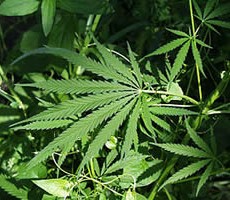What is Marijuana?
According to the National Survey on Drug Use, marijuana is the most commonly used illicit drug in the United States, with over 17 million users. The notion that marijuana is a relatively safe, non-addictive drug has helped the drug retain its popularity over the decades. The truth is that marijuana does have detrimental effects, and it can be addictive. Over 16 percent of admissions to drug rehab facilities are for marijuana addiction.
Marijuana is the dried leaves, stems, and seeds of the Cannabis sativa plant that is smoked in pipes or hand-rolled cigarettes. Marijuana can also be used by mixing it into food. Common street names for marijuana are:
• Pot
• Grass
• Herb
• Joint
• Weed
• Reefer
• Mary Jane
• Chronic
• Salvation
History of Marijuana Use
Marijuana has been in use in the United States since the 1850s, primarily for the treatment of pain and nausea. Recreational use of the drug started in the early 1900s, brought by Mexican immigrants into the Southwest. Local laws banning marijuana were passed, more to control immigration than the drug itself. By 1937, twenty-seven states had enacted laws prohibiting marijuana. In 1970, the Federal government classified marijuana as a Schedule I controlled substance.
Laws passed to prohibit marijuana use had little effect. Marijuana usage has remained steady in this country throughout the twentieth century. Today, 16 states have legalized marijuana for medical purposes, with two states, Washington and Colorado, legalizing the recreational use of marijuana altogether.
Marijuana Use in Teenagers
Marijuana abuse has long been a popular drug among teen and young adults. In the late 60s and early 70s, marijuana usage was practically synonymous with the hippie culture, and college students. In those days, however, most users were in their late teens and early twenties. Nowadays, children are starting to experiment with marijuana in the early teen years. A recent study shows 12.5 percent of eighth grade students have tried marijuana, while 7.2 percent were steady users. By tenth grade, 28.8 percent of teens had tried the drug and 17.6 percent being steady users of the drug.
Effects of Marijuana
Once THC, the chemical in marijuana responsible for the “high,” enters the brain, it stimulates the release of dopamine, the feel-good chemical that naturally occurs in the body. This gives the user feelings of pleasure, giddiness, and relaxation. Some marijuana users report heightened sensory perception, anxiety, and agitation. Extremely large doses of THC have been known to cause episodes of hallucinations, delusions, and temporary psychosis.
Marijuana increases heart rate and expands blood vessels. This accounts for the bloodshot eyes seen in marijuana users, and could raise a person’s risk of heart attack. Marijuana abuse also impairs coordination, memory, and cognitive thinking. Long term usage can lead to depression and/or anxiety disorder, sleep disturbances, and chronic bronchitis.






